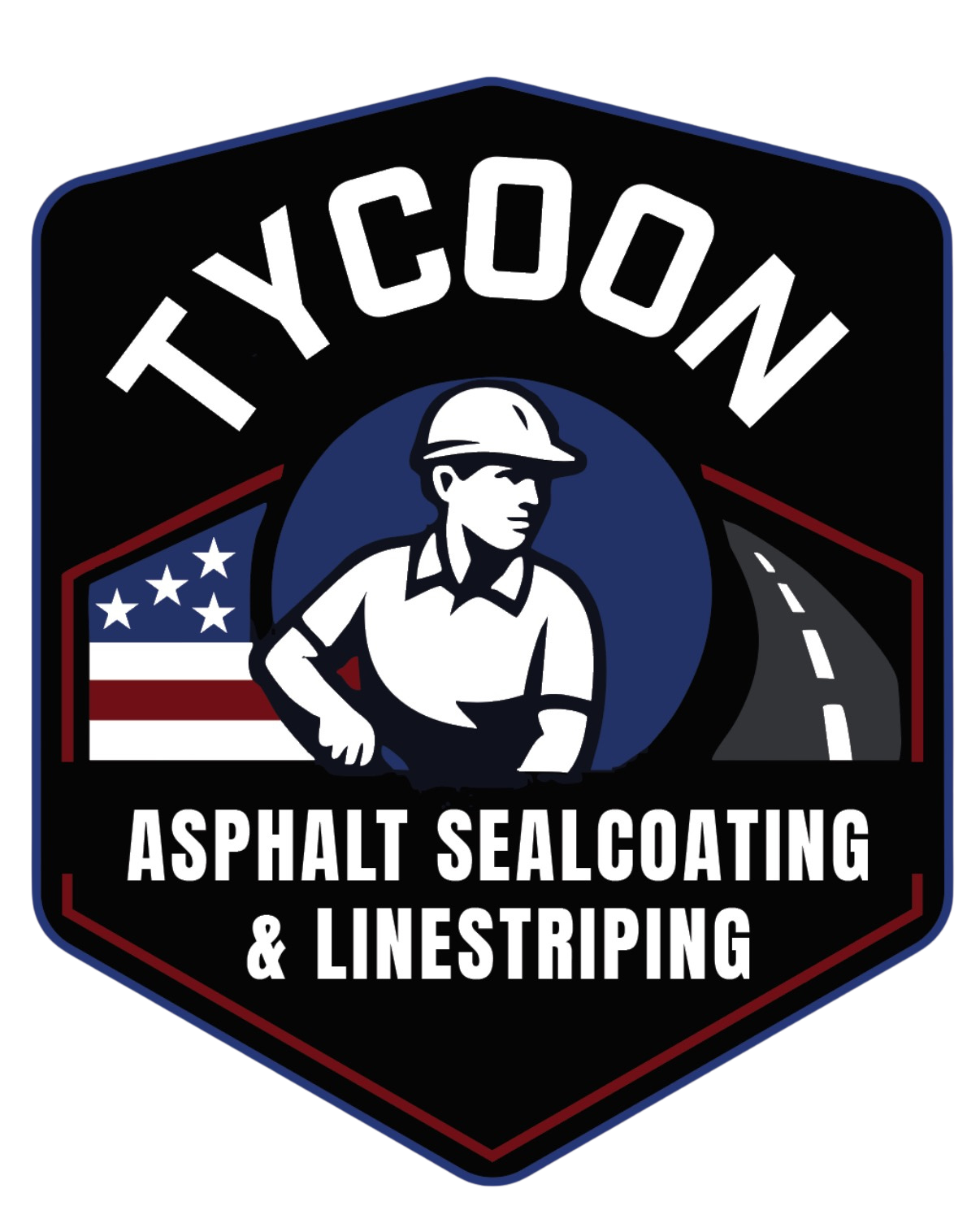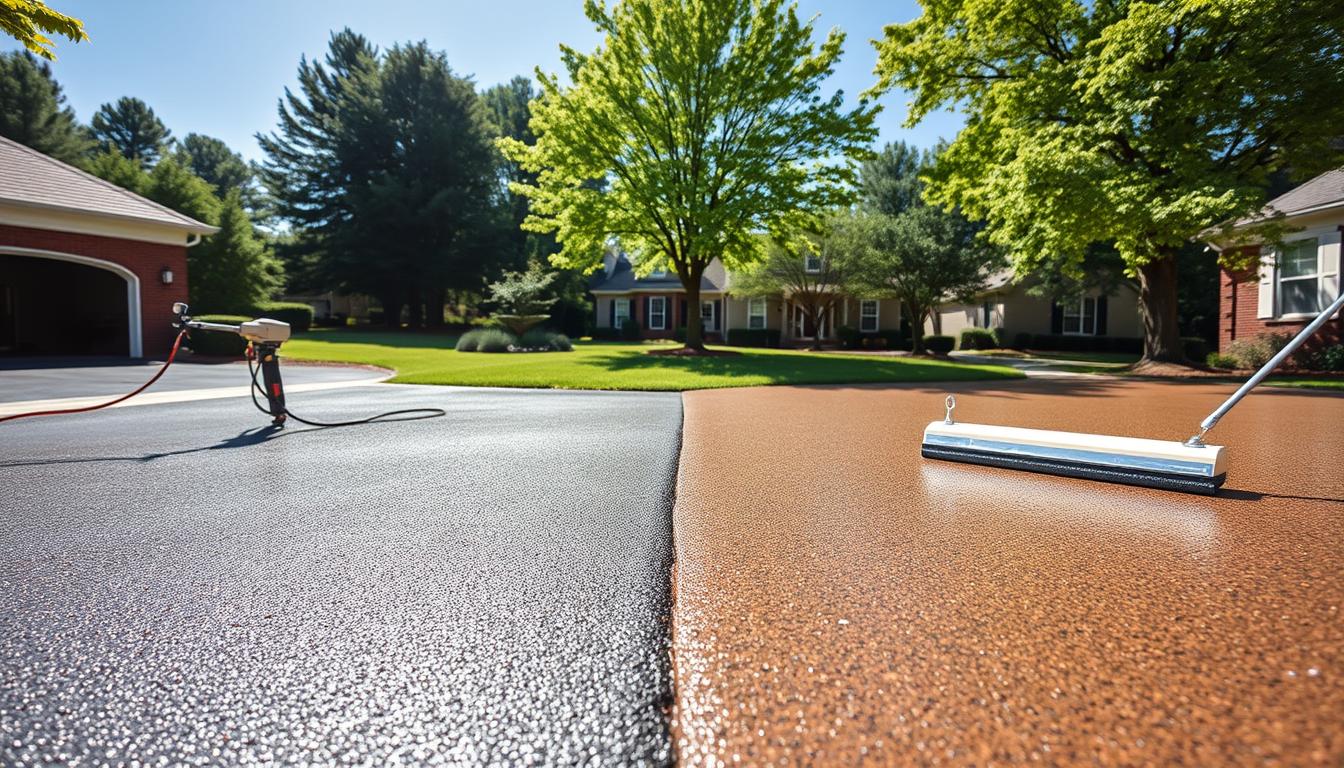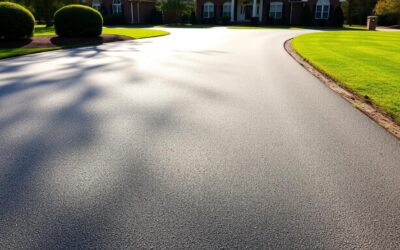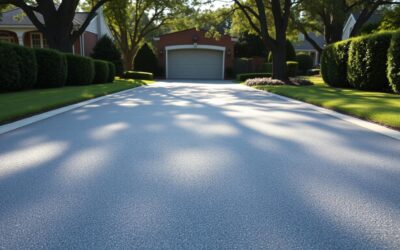We help homeowners choose the right approach to protect asphalt driveways and small parking areas. Sealcoating shields asphalt from water and sunlight, and most properties need a fresh coat about every two years under normal traffic.
In this guide we explain the two main ways to apply a sealcoat. One uses a tank and wand to move material quickly over large areas. The other spreads material by hand or machine for thicker coverage and fewer missed spots.
We outline what the on-site process feels like, how crews stage a job, and what a typical timeline looks like for your project. Expect plain answers about advantages, trade-offs, and when a hybrid approach makes sense for surface condition and access.
What sealcoating actually does for Charlotte asphalt driveways and parking lots
A fresh protective layer keeps asphalt from oxidizing and losing flexibility. We explain what that layer does, how we prepare the pavement, and when to schedule work so the finish cures right.
Why it matters: UV, water, and oxidation protection
Asphalt oxidizes under sun and becomes brittle. That wear leads to cracking and faster deterioration.
A quality sealer acts like a weather shield. It reduces UV damage and slows moisture penetration so the surface lasts longer.
Prep process we never skip: cleaning, drying, and crack attention
We clean fully: sweep debris, pull weeds, and clear joints. Crews repair cracks before applying sealer so the coat bonds evenly.
On tight areas we finish prep by hand; larger sections get machine cleaning to save time without cutting corners.
Charlotte weather reality: humidity, curing windows, and timing your project
High humidity and heat affect cure time. We pick windows with steady sun and breeze to reduce downtime.
Typical maintenance is about every two years, depending on traffic and local weather. We also barricade the area and return the site clean.
spray vs squeegee sealcoating charlotte: side‑by‑side comparison
How sealer gets applied has a big impact on coverage, cure time, and the final look of your pavement. We compare both approaches so you can match method to condition and goals.
Spray method basics: coverage speed and control
The spray method delivers fast coverage using a calibrated sprayer and tank. Rate control is reliable, which helps keep a consistent wet film on a smooth asphalt surface.
On tight, dense surfaces the sprayer produces even layers quickly. That makes it the go‑to for large lots where time matters.
Quality trade‑offs and squeegee method basics
The squeegee method pushes sealcoat into micro‑voids and often makes a stronger bond. It can yield a richer finish but takes longer and needs steady technique.
Drawbacks include potential over‑application on coarse pavement, which slows drying and can look patchy if not managed.
Matching method to site and crew
For compact driveways, a squeegee application can give better penetration and uniformity. For wide, open areas, a sprayer and crew size that supports fast runs usually wins.
Many pros use a squeegee first coat then a spray finish to blend advantages and control quality across varying surface textures.
When each method wins in Charlotte projects
The right choice depends on surface condition, access, and how quickly you need the area back in service. We match method to those factors and your appearance goals before work starts.
Choose spray when time is tight and lots are large, open, and smooth
We recommend spray when a lot or parking lot is open, smooth, and needs minimal downtime. Calibrated passes cover large panels quickly and keep a consistent rate across an asphalt surface.
Large projects with good access and clear staging favor this option because crews move fast and reopen lanes sooner.
Choose squeegee for worn, porous asphalt or when you want a deeper, smoother finish
For worn or porous pavement we lean toward squeegee. The tool compacts sealer into voids, creating a stronger bond and often a smoother final look.
Tight driveways, shaded sections, or textured areas also benefit from this method. When appearance and long‑term protection matter more than speed, we pick the squeegee option.
Cost, time, coats, and control: making the application method work for you
Deciding how many coats to apply shapes cost, cure time, and the final appearance of your pavement. We factor crew size, equipment, and weather into a plan that balances budget and performance.
One coat or two? Why many crews squeegee first, then spray for the finish
Many projects do best with two coats. The first pass, a squeegee application, builds bond and fills tiny voids.
The second coat uses a light spray method to remove micro‑marks and even out the visual layer. That combo improves durability while keeping material use efficient.
Labor, equipment, and schedule: how method impacts total project time
Hand work takes the most time; squeegee machines cut labor, and sprayers speed large runs. We size the crew to match scope so time on site stays predictable.
We also schedule cure windows between coats, especially in humid conditions, so the sealer can set before the next application or traffic returns.
Quality control essentials: even rate, consistent layer, and ethical sealer use
We calibrate pumps and bars and document gallons used to prevent over‑thinning. Wet film checks, neat cut‑ins, and consistent edge work guard finish quality.
Clear communication about cost drivers—number of coats, hand work, and layout complexity—helps you choose the right trade‑offs for time and long‑term value.
Your best-fit sealcoating method in Charlotte—our recommendation and next steps
We recommend a clear, site‑specific approach so your asphalt gets the protection it needs without unnecessary downtime.
For most jobs we start with a squeegee first coat to fill voids and build bond, then apply a light spray finish to even out the look and speed reopening. That combined application balances durability and appearance for driveways and parking areas.
If the pavement is dense and smooth, a spray‑only option can cut time. For aged, porous surfaces or visible cracks, we favor squeegee lead work to drive sealer into the surface.
We inspect each project, document rates and cure times, and stage lanes so neighbors keep access. Ready to plan? We’ll assess your asphalt, recommend the best method, and schedule a clean, efficient process that fits your timeline and budget.




0 Comments